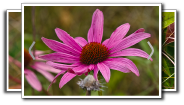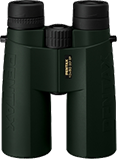alpha long-horned beetle
(Sternidius alpha)
Conservation • Description • Habitat • Ecology • Distribution • Taxonomy
|
|
||||||||||||||
Description |
Alpha long-horned beetle is a common, moderately small, highly variable, flat-faced longhorn beetle. It occurs in the United States and southern Canada east of the Great Plains. Adults are active from May through July in Minnesota, April through August elsewhere. The larvae develop in smooth sumac, staghorn sumac, shining sumac, boxelder, American sycamore, bitternut hickory, and shagbark hickory. Adults are 3⁄16″ to 5⁄16″ (4.3 to 8.2 mm) in length. The body is oblong, moderately robust, and reddish brown (pale) with brownish black (dark) markings. It is covered with short, variable-colored hairs. The head may be mottled or not. The upper front of the head (frons) is very slightly bulging, and it is covered with hairs that are lying flat. The face is nearly flat. The eyes are strongly notched around the bases of the antennae. The lower lobe is larger than the upper lobe, and it is as high to one and one-half times as high, sometimes higher than the cheek (gena). The antennae are narrow, cylindrical, ringed, and long, much longer than the body. They may be mottled or not. They have 11 segments. The fourth segment is distinctly longer than the first, and the fifth segment is shorter than the second or third. The plate on the first segment of the thorax (pronotum) is wider than long but less than twice as wide as long. On the rear third of each side margin there is a sharply angled extension (tubercle). A narrow groove runs across the pronotum near the rear margin. The groove is complete, not interrupted. There are three distinct, long, dark, thickened areas (callosities) in the upper middle of the pronotum: two oblique callosities near the front margin, and one longitudinal callosity in the middle at the rear margin. Together they form a triangle. The hairs on the pronotum are variable in color, but they are usually yellowish brown to ash gray. The surface of the pronotum is finely pitted (punctate), but the punctures are obscured by the hairs. The wing covers (elytra) are about two times longer than wide. The sides are almost parallel for most of their length, then tapered on the last third to a broad point to the tip. Each elytron has four longitudinal ridges not counting the leading edge (costal margin) and inner margin, but they are not prominent. Each ridge has a variable number of dark callosities. The callosities are minute near the front of the elytron, larger in the middle and at the rear. On each elytron there is a marking on the side margin (epipleural) and another on the upper surface (discal). The epipleural marking is dark, long, and variable. It may be broadest at the middle of the wing and narrowing to a point at the costal margin in the shoulder (humeral) area, or it may be narrow for its entire length and tapered at both ends. It sometimes ends before reaching the shoulder, sometimes extends onto and wraps around the shoulder. The discal marking is also variable, and it is sometimes absent. It extends from the costal margin forward at an angle to the inner margin. It sometimes continues forward as a line along the inner margin to the plate between the wing bases (scutellum). The elytral surface is densely punctate near the base, becoming less so toward the tip. It is usually densely covered with reclining hairs. The hairs may be uniformly gray, whitish, yellowish brown, or reddish brown, or they may be a combination of any of these colors. On each leg, the third segment (femur) is usually mottled, and the fourth segment (tibia) is dark. The last part of the leg (tarsus), corresponding to the foot, is dark. It has five segments, but the fourth segment is minute, and it is concealed between the lobes of the heart-shaped third segment, making it appear that there are only four segments. The first segment is about as long as the second and third taken together. |
Size |
Total length: 3⁄16″ to 5⁄16″ (4.3 to 8.2 mm) |
Similar Species |
Habitat and Hosts |
Smooth sumac, staghorn sumac, shining sumac, boxelder, American sycamore, bitternut hickory, and shagbark hickory |
Ecology |
Season |
May through July |
Behavior |
|
Life Cycle |
|
Larva Food |
|
Adult Food |
|
Distribution |
||
|
Sources |
|
| 4/24/2025 | ||
Occurrence |
||
Common |
||
Taxonomy |
|
Order |
Coleoptera (Beetles) |
Suborder |
Polyphaga (Water, Rove, Scarab, Long-horned, Leaf, and Snout Beetles) |
Infraorder |
Cucujiformia |
Superfamily |
Chrysomeloidea (leaf beetles and allies) |
Family |
Cerambycidae (longhorn beetles) |
Subfamily |
Lamiinae (flat-faced longhorn beetles) |
Tribe |
Acanthocinini |
Genus |
Sternidius |
Subordinate Taxa |
|
Sternidius alpha is highly variable in both coloration and pattern, and both geographically and within local populations. This has led to the naming of many species, subspecies, and varieties. All of these are now treated by most sources as synonyms of Sternidius alpha, and no subspecies or varieties are currently recognized. |
|
Synonyms |
|
Amniscus alpha Amniscus alpha var. divergens Amniscus fascicularis Amniscus lateralis Amniscus vicinus Lamia alpha Lamia fascicularis Leiopus alpha Leiopus alpha ssp. floridanus Leiopus alpha var. divergens Leiopus alpha var. floridanus Leiopus cinereus Leiopus dentatus Leiopus fascicularis Leiopus floridanus Leiopus fuscicularis Leiopus lateralis Leiopus nelsonicus Leiopus obscurellus Leiopus pleuralis Leiopus rusticus Leiopus scapalis Leiopus testaceus Leiopus timidus Leiopus vicinus Leiopus xanthoxyli Leptostylus alpha Leptostylus fascicularis Leptostylus lateralis Leptostylus vicinus Liopinus alpha Liopinus alpha ssp. coloradensis Liopinus alpha ssp. floridanus Liopinus alpha ssp. nigricans Liopinus dentatus Liopinus fascicularis Liopinus lateralis Liopinus nelsonicus Liopinus obscurellus Liopinus pleuralis Liopinus rusticus Liopinus scapalis Liopinus suturalis Liopinus testaceus Liopinus timidus Liopinus vicinus Liopinus vittatus Liopinus xanthoxyli Liopus alpha Liopus alpha var. cinereus Liopus alpha var. divergens Liopus alpha var. floridanus Liopus cinereus Liopus fascicularis Liopus floridanus Liopus rusticus Liopus xanthoxyli Sternidius alpha ssp. alpha Sternidius alpha ssp. coloradensis Sternidius alpha ssp. floridanus Sternidius alpha ssp. nigricans Sternidius alpha ssp. vicinus Sternidius cinereus Sternidius fascicularis Sternidius fascicularis ssp. fascicularis Sternidius floridanus Sternidius rusticus Sternidius suturalis Sternidius vittatus Sternidius xanthoxyli |
|
|
|
Common Names |
|
alpha long-horned beetle |
|
Glossary
Costal margin
The leading edge of the forewing of insects.
Elytra
The hardened or leathery forewings of beetles used to protect the fragile hindwings, which are used for flying. Singular: elytron.
Frons
The upper front part of an insect’s face, roughly corresponding to the forehead.
Gena
In insects: The area between the compound eye and the mandible; the cheek. In birds: The area between the the angle of the jaw and the bill; the feathered side (outside) of the under mandible. Plural: genae.
Pronotum
The exoskeletal plate on the upper side of the first segment of the thorax of an insect.
Punctate
Dotted with pits (punctures), translucent sunken glands, or colored spots of pigment.
Scutellum
The exoskeletal plate covering the rearward (posterior) part of the middle segment of the thorax in some insects. In Coleoptera, Hemiptera, and Homoptera, the dorsal, often triangular plate behind the pronotum and between the bases of the front wings. In Diptera, the exoskeletal plate between the abdomen and the thorax.
Tarsus
On insects, the last two to five subdivisions of the leg, attached to the tibia; the foot. On spiders, the last segment of the leg. Plural: tarsi.
Tibia
The fourth segment of an insect leg, after the femur and before the tarsus (foot). The fifth segment of a spider leg or palp. Plural: tibiae.
Tubercle
On plants and animals: a small, rounded, raised projection on the surface. On insects and spiders: a low, small, usually rounded, knob-like projection. On slugs: raised areas of skin between grooves covering the body.
Visitor Photos |
||
Share your photo of this insect. |
||
This button not working for you? |
||
Alfredo Colon |
||
 |
 |
|
 |
 |
|
 |
 |
|
MinnesotaSeasons.com Photos |
||
|
||
|
||

Slideshows |
|

Visitor Videos |
||
Share your video of this insect. |
||
This button not working for you? |
||
|
Other Videos |
||
|

|
Created: 4/25/2025 Last Updated: © MinnesotaSeasons.com. All rights reserved. |



